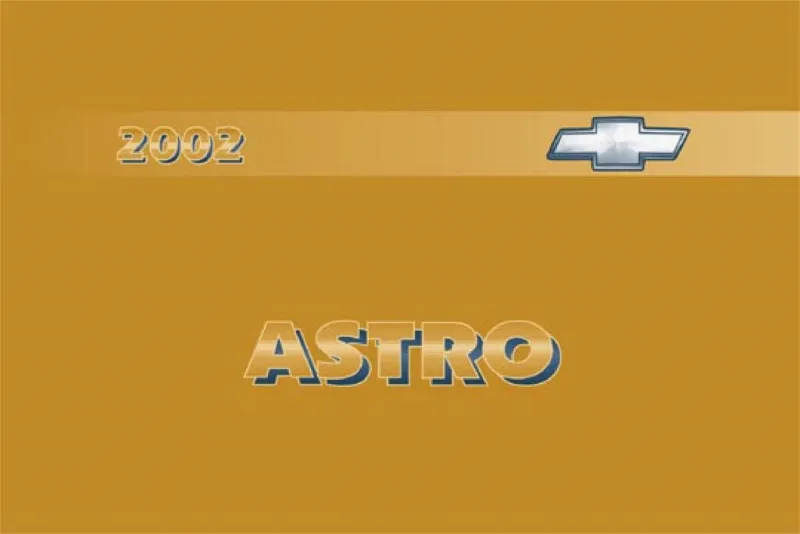2002 Chevrolet Astro Owner's Manual

Table of Contents
2002 Chevrolet Astro Overview
Introduction
The 2002 Chevrolet Astro is a versatile and reliable vehicle, popular among families and commercial users alike. As a mid-size van, it provides ample interior space and a robust build quality that makes it a dependable choice for various lifestyles. Known for its strong performance and practical design, the Astro caters to those seeking functionality without sacrificing comfort.
Powertrains
Under the hood, the 2002 Chevy Astro comes equipped with a powerful 4.3-liter V6 engine that generates 190 horsepower and 250 lb-ft of torque. This engine is paired with a smooth-shifting four-speed automatic transmission, allowing the Astro to deliver a respectable towing capacity and responsive handling. Available in both rear-wheel and all-wheel drive configurations, the Astro is designed to tackle a variety of road conditions, making it ideal for both city driving and weekend getaways.
Trims
The 2002 Astro offers several trims, including the base LS and the more feature-rich LT. The LS trim comes well-equipped with essential amenities, while the LT variant adds upscale features such as upgraded upholstery, power windows, and an improved audio system. The availability of optional packages further enhances customization, allowing buyers to tailor their Astro for personal or business use.
Features
Standard features for the 2002 Chevrolet Astro include air conditioning, a quality sound system, and ample storage options throughout the cabin. Notably, the Astro's flexible seating arrangement allows for various configurations, accommodating up to eight passengers. Safety is also prioritized, featuring dual front airbags and optional antilock brakes for added peace of mind on the road.
Owner's Manual
The owner's manual for the 2002 Chevrolet Astro is an invaluable resource for new and current owners, providing comprehensive guidelines on vehicle operation, maintenance, and safety features. It covers essential topics such as fluid checks, tire pressure monitoring, and troubleshooting common issues, ensuring owners get the most out of their Astro while maintaining its reliability and performance over time.
User manual download
The Chevrolet Astro owner manual for the 2002 model year is to be found in PDF downloadable format on this page. The owner manual for the model year 2002 is free and in English, but the repair manuals are usually not easy to get and may cost more.
Manual Questions
Fill the form below and someone will help you!

